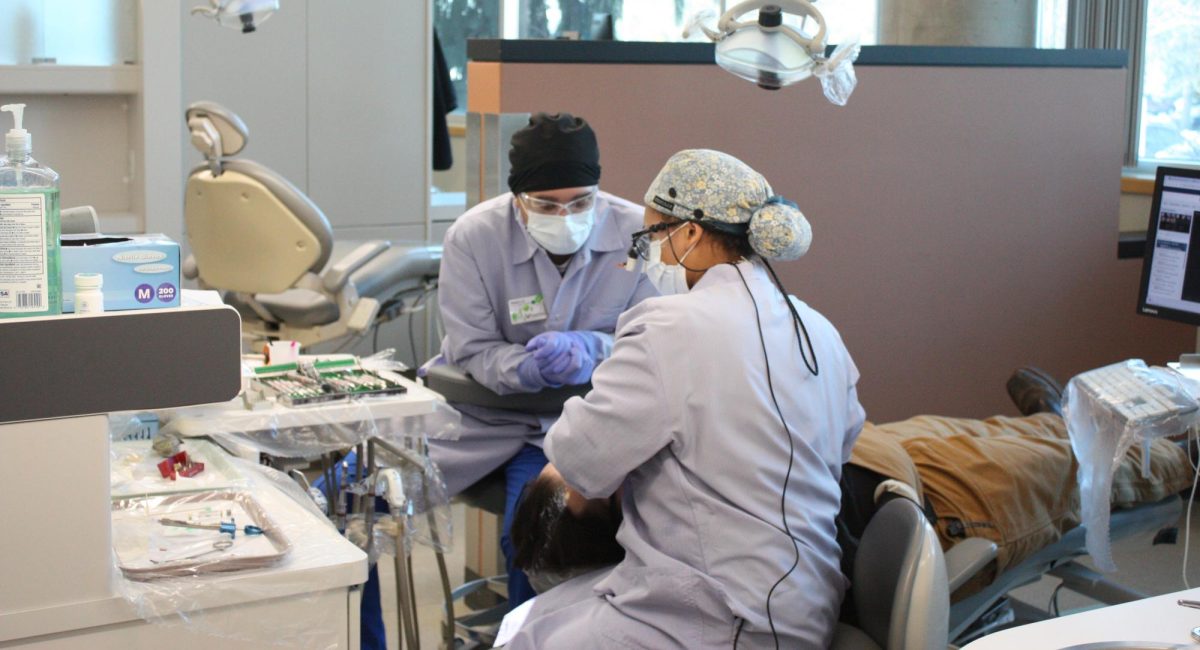- Academic Campus Programs
- Arts & Features
- Arts and Features (New)
- Carousel
- Community
- COVID-19
- EWU (New)
- Local (New)
- News
- News (New)
Why is tuition so expensive: the marketing of education
May 19, 2021
According to Forbes, the average cost of attending a four-year college has risen by 497% since 1985. This surpasses the rate of inflation which since 1985 has been 147.51%. These numbers don’t come as a surprise to many, especially when realizing that as of 2021, total student debt in the U.S. has reached a whopping 1.7 trillion dollars. The question on many people’s mind is when did post-secondary education become such a financial crisis, and more importantly, how?
The list of theories as to why college is so expensive is immense but some ring more true than others. One that rings especially concerns students, their accommodations and how schools have grown in the past 100 years.
This main theory revolves around how education itself has become more of a business than a school. In an attempt to allure more students to attend their school, many institutions have increasingly spent more and more on accommodations and programs that simply didn’t exist back in 1985.
One way of attracting students is having a wide range of programs for them to study. EWU, like many state schools, is also guilty of this. While having over 80 distinct undergraduate degrees, concentrated into 25 broad fields of study, for only around 12,000 students may seem normal, many programs are left far less populated than others. This brings another question: does EWU really need 80 undergraduate degrees?
Another way of attracting students is through a vast offering of campus services that seek to enhance their on-campus experience.

Entertainment events, orientations, career services, the Pride Center, health and wellness, counseling and disability services… the list goes on forever. At the end of the day, students are no longer paying just for education, but for an ever-growing list of resources to enhance their education. In a way, education itself has become an arms-race of programs and services to attract students.
To get a better understanding behind the reason for this vast offering of services, The Easterner sat down with Dr. Samantha Armstrong-Ash, associate vice president for student life and dean of students.
“In the original model of colleges,” said Armstrong-Ash, “you had professors also acting as administrative faculty and student faculty as the labor of education hadn’t really separated it out yet. Over the years, colleges started forming student governments, clubs and student-led organizations. All of these different waves of people entering education require different needs. Now you have a need for accommodating health, disability and the staff required to fulfill them.”
This goes hand in hand with another reason colleges’ tuition has dramatically risen: unfunded mandates. Legislative government bodies like the Washington Student Association and the Washington State House and Senate often pass certain mandates to help change college campuses. However, these mandates do not always come with government funding.

“A perfect example of this is our Title IX training,” said Armstrong-Ash. “State laws require that students and employees partake in this anti-sexual discrimination training. This leaves the need for money to assign these courses, hire people running them, and much more. That doesn’t necessarily make it a bad thing. This training is great, but it leaves a gap which the institution must fill.”
So if an over-indulgence of extracurricular programs and services are to blame, why not just cut it?
“It’s the whole ecosystem,” said Armstrong-Ash. “When we talk about money and these institutions, it is just not as easy as saying, ‘it’s too expensive, cut it,’ well what are you going to cut? If you cut certain things, there will be outrage from certain parties about the funding cut.”
At the end of the day, students can play a huge role in managing the tuition crisis. Learning how money works, how services are paid for and attending committees such as the Course and Program Approval Committee (CPAC) are vastly important. If students engage in these committees, they have a chance to have their voice heard and more importantly help take action in the way their institutions spend.









most expensive school in the philippines • Aug 5, 2021 at 9:24 pm
Thank you so much for this article! This was exactly what I needed.